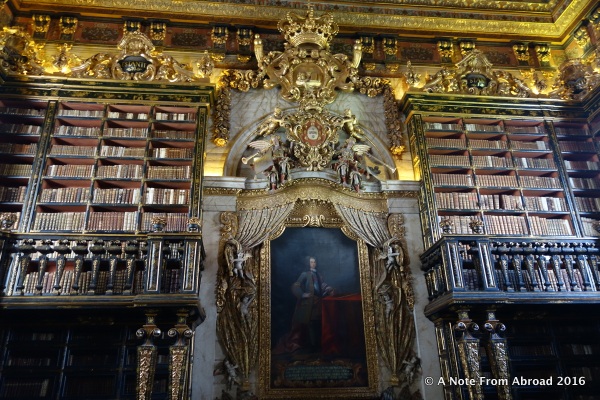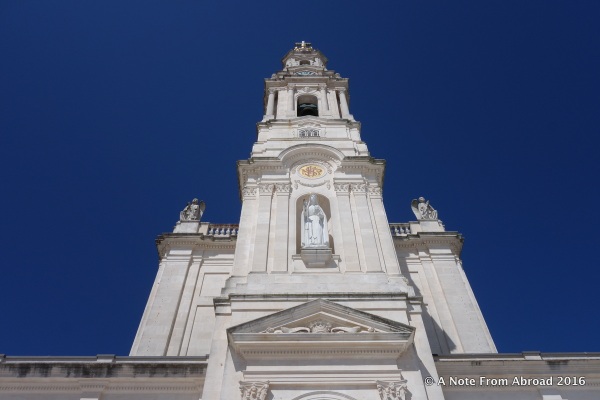May 19th – Coimbra and Fatima, Portugal

Fatima, Portugal
Convento de Santa Cruz do Buçaco is a former Carmelite monastery in the Mata Nacional do Buçaco (Buçaco forest). Built in 1628, it was closed in 1834 at the end of the Portuguese Civil War when all religious orders were suppressed in Portugal.
Most of the buildings were demolished and the stones were reused in the Palace Hotel of Buçaco. However the chapel of the convent, with Baroque altarpieces, remains beside the hotel. This became our morning “comfort stop” to help break up the long drive from Porto to Tomar.

Bussasco Palace Hotel
From the outside, it looks like any princess would be right at home. The grounds are opulent, although in need of some upkeep. Hanging wisteria gives a bit of Southern genteel appeal. According to write ups, the property recently changed hands and is in bad need of an influx of cash. I wish them well, as it looks like a charming place to spend a few relaxing days.
Continuing our drive south to Coimbra, the third-largest city in Portugal for our lunch stop and an opportunity to walk the streets for a short time.

Coimbra

Coimbra
Here we visited the University of Coimbra, with more than 700 years of history, making it one of the oldest universities in continuous operation in the world. On 22 June 2013, UNESCO added the university to its World Heritage List.

University of Coimbra
The standout of our visit to the University was seeing the Joanina Library which houses a rare collection of books and documents from the 16th, 17th and 18th centuries, representing the best works from Europe at the time.
To keep the works in the best possible condition, the library acts as a vault with thick walls and a heavy door to maintain a stable environment and a constant temperature of 18–20 °C (64–68 °F).
“In addition to issues of humidity and temperature, the stacks are affected by another “enemy”: papirófagos, insects that survive on paper. But, the structure is protected by being constructed of oak woods, that, in addition to its dense nature (which makes it difficult for wood penetration, elicits an odor that is repellent to these insects. ” ~ Wikipedia
What I found particularly interesting is that there is a small colony of bats that resides inside the library whose function is to eat any insects that might invade. To protect the furniture, from bat droppings, it is covered each night with leather towels and then each morning the library is cleaned.
Sounds like a pretty good working relationship to me…

Inside University Library

Library of University of Coimbra
But the highlight of the day was saved for the afternoon – our visit to Fatima, one of the most important Catholic shrines in the world dedicated to the Virgin Mary. Its Sanctuary welcomes millions of pilgrims from all over the world. Fatima’s fame is due to the Apparitions of Our Lady of the Rosary that appeared to three shepherd children in 1917.
I had not looked at any pictures before our visit, and I was surprised that the place was nothing like I had imagined. Somehow the size was what first startled me. I somehow thought it would be smaller, more intimate. But NO, it was the size of several football fields.
At one end was a modern sanctuary. Stark by contrast to the majority of cathedrals and major churches we have visited.

Inside newer chapel

Inside the newer, modern chapel at Fatima
At the opposite end of the enormous open concrete amphitheater is the great Basilica of Our Lady of the Rosary. It is built in neoclassical style, flanked by colonnades linking it with the extensive convent.

Opposite the newer chapel is the Basilica of our Lady

Basilica of our Lady of the Rosary

Inside the Basilica

Many lit candles for special prayer requests
Overnight: Tomar – Dos Templarios Hotel
GRATITUDE MOMENT: Today I am grateful for the opportunity to visit one of the most well-known sites in the Christian world, Fatima. Although nothing was sold inside the premises, I walked away with a “commercialized” feeling, more than one of reverence.

